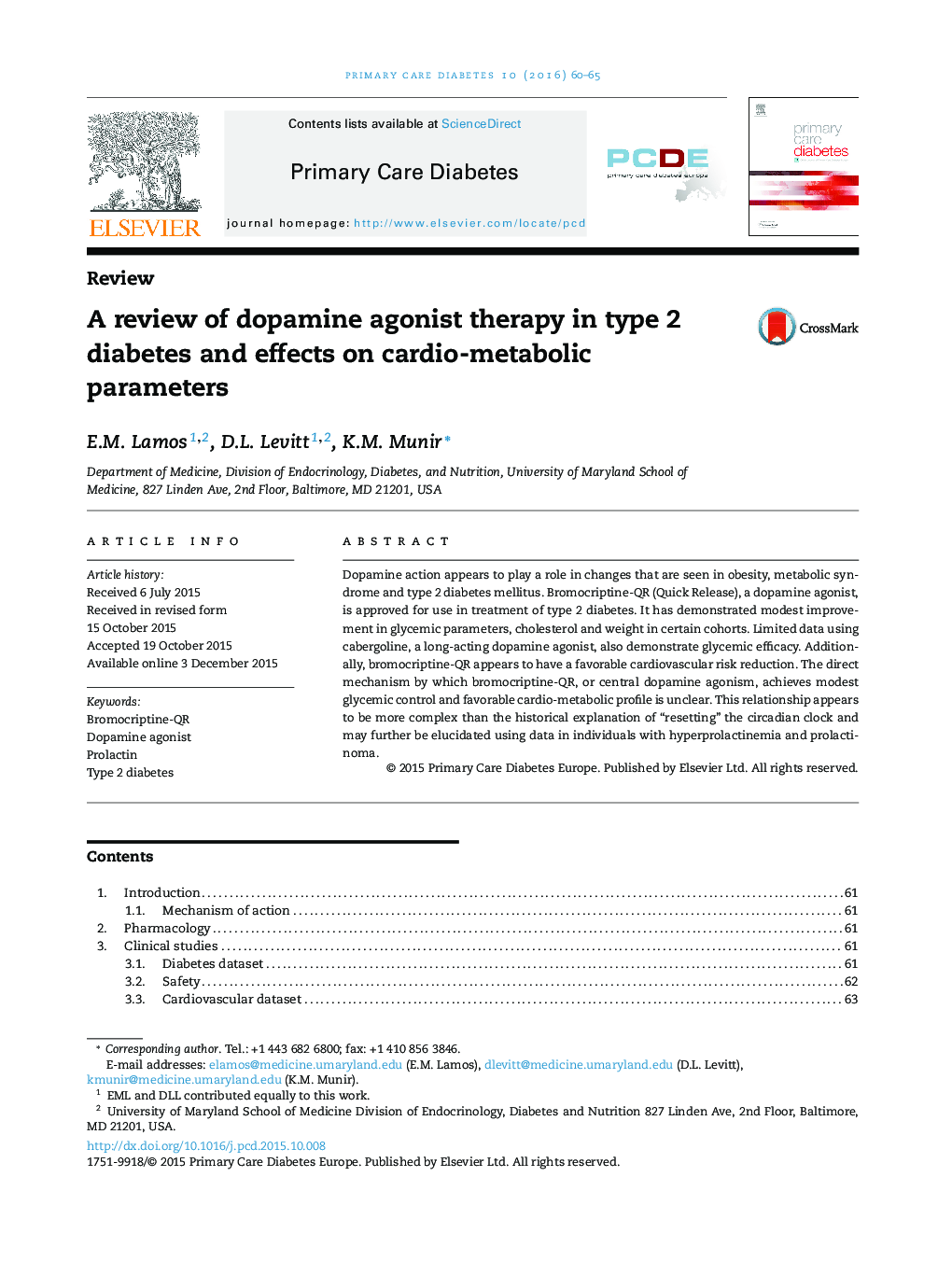| Article ID | Journal | Published Year | Pages | File Type |
|---|---|---|---|---|
| 5871225 | Primary Care Diabetes | 2016 | 6 Pages |
â¢Bromocriptine decreases hemoglobin A1c values by approximately 0.5-1.0% in certain cohorts.â¢Bromocriptine treated patients experience fewer major adverse cardiovascular events.â¢Effect on the circadian rhythm and CNS may explain the positive metabolic outcomes.â¢Bromocriptine as a treatment for diabetes may be limited by adverse drug reactions.â¢Prolactin may be a novel marker for cardiovascular outcomes.
Dopamine action appears to play a role in changes that are seen in obesity, metabolic syndrome and type 2 diabetes mellitus. Bromocriptine-QR (Quick Release), a dopamine agonist, is approved for use in treatment of type 2 diabetes. It has demonstrated modest improvement in glycemic parameters, cholesterol and weight in certain cohorts. Limited data using cabergoline, a long-acting dopamine agonist, also demonstrate glycemic efficacy. Additionally, bromocriptine-QR appears to have a favorable cardiovascular risk reduction. The direct mechanism by which bromocriptine-QR, or central dopamine agonism, achieves modest glycemic control and favorable cardio-metabolic profile is unclear. This relationship appears to be more complex than the historical explanation of “resetting” the circadian clock and may further be elucidated using data in individuals with hyperprolactinemia and prolactinoma.
